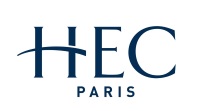No 1308: Enhancing perceived safety in human–robot collaborative construction using immersive virtual environments
Sangseok You (), Jeong-Hwan Kim, SangHyun Lee, Vineet Kamat and Lionel Robert
Additional contact information
Sangseok You: HEC Paris
Jeong-Hwan Kim: University of Michigan at Ann Arbor - Department of Civil and Environmental Engineering
SangHyun Lee: University of Michigan at Ann Arbor - Department of Civil and Environmental Engineering
Vineet Kamat: University of Michigan at Ann Arbor - Department of Civil and Environmental Engineering
Lionel Robert: University of Michigan at Ann Arbor - School of Information
Abstract: Advances in robotics now permit humans to work collaboratively with robots. However, humans often feel unsafe working alongside robots. Our knowledge of how to help humans overcome this issue is limited by two challenges. One, it is difficult, expensive and time-consuming to prototype robots and set up various work situations needed to conduct studies in this area. Two, we lack strong theoretical models to predict and explain perceived safety and its influence on human–robot work collaboration (HRWC). To address these issues, we introduce the Robot Acceptance Safety Model (RASM) and employ immersive virtual environments (IVEs) to examine perceived safety of working on tasks alongside a robot. Results from a between-subjects experiment done in an IVE show that separation of work areas between robots and humans increases perceived safety by promoting team identification and trust in the robot. In addition, the more participants felt it was safe to work with the robot, the more willing they were to work alongside the robot in the future.
Keywords: Human–Robot Work Collaboration (HRWC); Immersive Virtual; Environment (IVE); Robot Acceptance Safety Model (RASM); Masonry; Safety; Trust; Team; Identification; Intention to Work with Robot
41 pages, September 12, 2018
Note: This article is a preprint. The final version is published in Automation in Construction, Volume 96, December 2018, Pages 161-170, https://doi.org/10.1016/j.autcon.2018.09.008
Full text files
papers.cfm?abstract_id=3260634 HTML file Full text
Questions (including download problems) about the papers in this series should be directed to Antoine Haldemann ()
Report other problems with accessing this service to Sune Karlsson ().
RePEc:ebg:heccah:1308This page generated on 2025-06-10 11:14:56.

